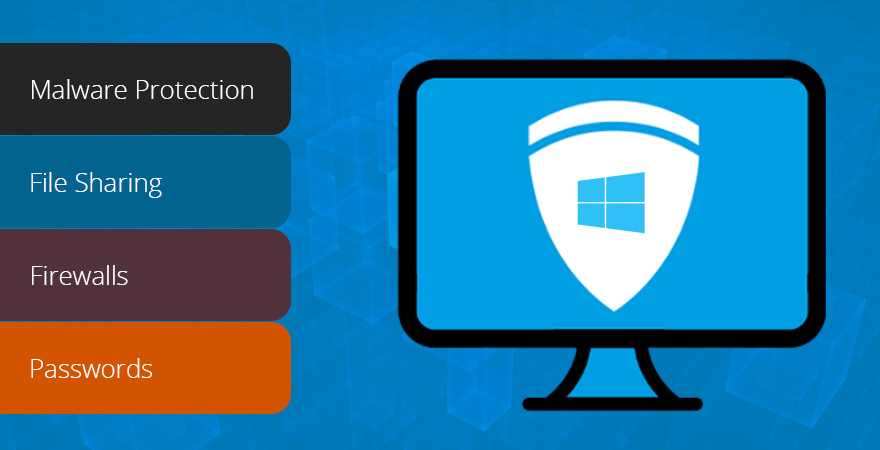“Most people are starting to realize that there are only two different types of companies in the world: those that have been breached and know it and those that have been breached and don’t know it. Therefore, prevention is not sufficient, and you’re going to have to invest in detection because you’re going to want to know what system has been breached as fast as humanly possible so that you can contain and remediate.” Ted Schlein, Venture Capitalist at Kleiner Perkins Caufield & Byers:
It’s already been quite a year in the world of cyber security. We are less than 60 days into the year and have already had three reports of cyber breeches, including our very own US Homeland Security. CSO Online is predicting that cyber crime damage costs will reach $6 Trillion by 2021. With the year starting out with the announcement of the Spectre and Meltdown bugs affecting every computer device brand across the board, this can be a very stressful topic for IT staff regardless of your business.
Is All Lost?
“Although there is no guarantee that you’ll always be free from spyware, there are some things you can do to seriously lower your risk.” ~ SchoolCounselor.com
Take heart. While the outlook seems bleak, it’s not all bad. As School Counselor’s quote above states, there are things you can do to significantly lower your risk of attack. In this first of two series, we’ve compiled this list of four things you can do to lower your cyber security risk in your Windows 10 environment.

Four Things You Can Do to Lower Your Cyber Security Risk
1 – Keep Your Virus and Malware Protection Up To Date
Bestantivirus.com lists the top 10 anti-virus providers, including McAfee, Norton and, BitDefender. But if you are running Windows 10 in your home environment, having a 3rd party antivirus software is not necessarily required. Windows 10 has a very robust program already built into the platform. But for businesses and enterprises which require a deeper level of security, the Windows Defender does miss some enterprise level features like central configuration and policy management, altering, and monitoring. Whatever your implementation, do your research on what is best for you.
2 – Check your file sharing and permissions
By default, Windows 10 has some default settings that may cause you concern. One of those is the delivery optimization option, which essentially turns your computer into a hub for Microsoft updates. If Microsoft’s servers are bogged down, the system will begin looking for another source for the updates – and that source is usually other Windows 10 systems. While Microsoft states that the updates have the same security protocol as the rest of their solution, this can open the doors to malicious sources. CNET has a great article on this and suggestions on how to protect your computer from being a hub for Microsoft updates.
3 – Protect Your Border With Effective Firewall Support
According to a survey by Manta, 1 in 3 small businesses doesn’t have the tools in place, like firewalls, to protect their business. 1 in 3. If that statistic isn’t startling enough, the CNBC article goes on to share how many small businesses don’t even think they are at risk for a cyber attack, believing instead that attackers prefer large corporations like Target or Home Depot. The Securities and Exchanges Commission is quoted as saying back in 2015 that “Small and midsize businesses are not just targets of cybercrime; they are its principal target.” Even a simple firewall, while not perfect, can be a valuable part of a businesses strategy to protect itself from cyber attacks.
4 – Don’t use weak passwords
Strong passwords have been the mantra of IT services staff for years now, so it seems like this should be common sense for any organization. But it’s not. Equifax has admitted that the cause of its infamous breech late last year was because it used the default password of “admin” for a database housed outside of the United States. According to this blog on Preempt, an adaptive threat prevention platform, 35% of users have weak passwords…and the remaining 65% can be cracked. Ensure the security of your system by employing effective password strategies in your business (and personal) life.
Cloud and your Cyber Security risk
The cloud and the as-a-service industry has added a new level of protection for businesses looking to secure their data. While the cloud’s reputation seems to be one of not having strong defenses against attack, this assumption is entirely false. Because cloud providers, like Desktop-as-a-Service, are housing data that is not their own, there are strict rules and laws surrounding the security of the provider’s system. Provider’s also work to recruit and retain cyber security industry experts, so at the end of the day, your business is actually receiving the best cyber security available. The icing on the top is that the solution often reduces the OpEx of a companies IT department. This win-win solution can be yours, as well. Schedule your demo today of one of the leading Desktop-as-a-Service providers on the market.


